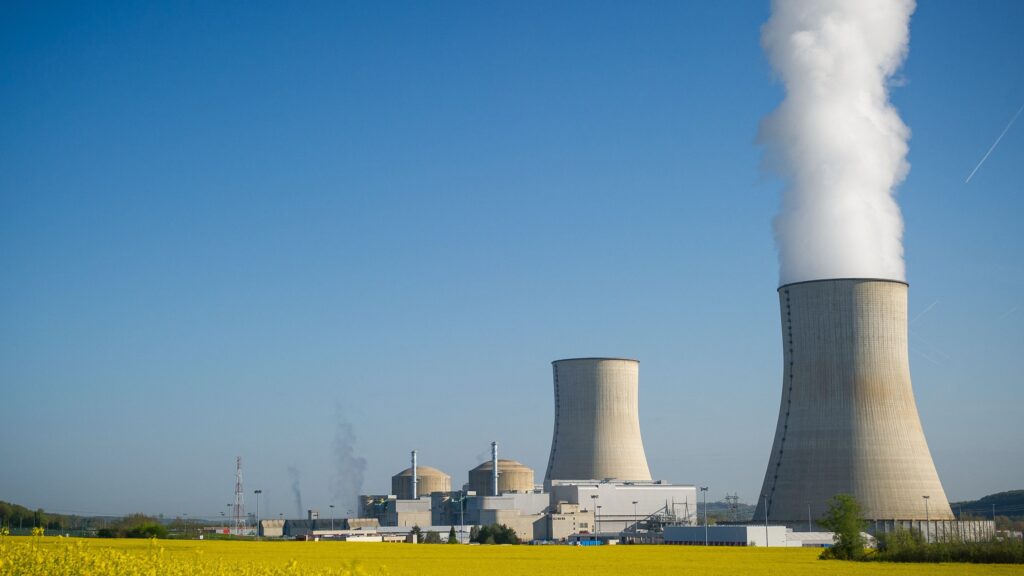Say Goodbye to the nominal way of producing power as these micro nuclear reactors might be replacing them soon in time promising to be the best of the kind. Power generation has been a hassle for years, as world seeks for a renewable-change, owing to the depleting impacts of non-renewable power generation, the world had experienced in the past and current.
Though nuclear power is considered non-renewable, it could become completely renewable if uranium is sourced from seawater, not mined ore. Also, geological processes would replenish uranium, making them available all-time.
The only caveat for the plant had been its indefinite nature being disastrous like 1986 Chernobyl incident and the 2011 Fukushima tragedy. However, scientists managed to evanesce that by now proving it to be safe to have a reactor, even just few feet away. A press release explained that it may also solve a number of other key issues of nuclear energy.
Working of Nuclear Reactor & Why they are hazardous?
These reactors involve uranium atoms processed into small tubes called fuel rods, which are packed in bundle and placed in the cooling medium, mostly water. A typical nuclear reactor would contain two million fuel pellets inside the core. When the nuclear fission reaction kick starts, the fuel rods produce immense heat that will be carried away by the water, which further spades out as steam for running the turbine. The rotation of the turbine generates electricity.
The real issue here is when the rods aren’t circulated with enough water to keep them cool, in short heat exchange is not properly handled, failing which entire facility would be put at risk of meltdown.
The chain reaction of the fission produces enormous energy to create catastrophic effects that couldn’t be borne by humans.
New Solution for Safer Nuclear
Fortunately, the new solution propose by the BYU scientists suggests to store the radioactive elements in molten salts instead of fuel rods.
“Nuclear energy can be extremely safe and affordable, if done the right way,” Matthew Memmott, a nuclear engineering expert said.
As there are no emissions or pollution from it, nuclear would be a very good solution to the energy situation we’re in now.
The new micro-reactor proposes to dissolve all of the uranium in molten salt, thanks to its high melting temperature (5500C). The radiated heat is absorbed into the salt, removing the risk of a meltdown.
The products of the reaction can be also safely stored within the molten salts, eliminating nuclear wastes and while some like Cobalt-60, gold, platinum and neodymium can be extracted from salt and resold.
An added advantage comes when these molten salts in the process are also 100% reusable. “As we pulled out valuable elements, we found we could also remove oxygen and hydrogen,” Memmott said. “Through this process, we can make the salt fully clean again and reuse it. We can recycle the salt indefinitely.”
The idea of pulling in molten-salt is not new, as experiments were already constructed and operated in 1960s, but were put down due to problems with corrosion in the early examples. After then, the field gets its bloom now.
A Compact Nuclear-Reactor
Nuclear reactors in the production, usually have the core to be measuring 30 ft x 30 ft and resides outside the city in an exclusion zone atleast with over one square mile to reduce the risk of radiation.
Meanwhile, this molten-salt nuclear reactor measures just 4 ft x 7 ft, so they would fit into a room or the back of a truck.
As there’s no risk of a meltdown for these, there is no need for a large exclusion zone, that’s something incredible.
“For the last 60 years, people have had the gut reaction that nuclear is bad, it’s big, it’s dangerous. Those perceptions are based on potential issues for generation one, but having the molten salt reactor is equivalent of having a silicon chip [in computing]. We can have smaller, safer, cheaper reactors and get rid of those problems,” Memmott elaborated.
Related Posts
The research team estimated that the micro reactor can produce enough energy to power 1,000 typical homes in the U.S. Their compact nature, makes it portable too where it can be driven to remote locations to distribute power.
Another Approach by SpaceX Employee
A ‘safer nuclear reactor’ gets on the shoulders of another company ‘Radiant Nuclear’, run by a former SpaceX employee, Doug Bernauer, who worked on portable nuclear energy solutions for Mars for the private Space firm. However, Radiant approach deviates in the way that it uses small pellets coated in multiple layers of graphite and a layer of silicon carbide in lieu of a traditional fuel rod.
Both the solutions could one day be energy-transitional by providing safer nuclear power that’s also transportable.
Ready for Nuclear-Power in your home?

